After this week’s readings I have found myself stuck on a particular topic. It was something that kept itching my brain, being brought back to my attention in big bold blocks that quite honestly didn’t feel like it had much to do with emerging technologies but in every way spoke to how we interact with change.
It was and is the library organizational chart.
Ok, ok, hear me out. It may not seem like such a big deal, but I believe there are huge ramifications in how we decide to depict our structure.
It started with reading The Hyperlinked Organization by David Weinberger. It was written in 1999 and let me tell you how true it still rings in 2022. And when I say it rings, it bangs and booms. I mean I whooped and hollered, I exasperated and expelled noises of absolute vindication. Here are just few gems:
The company org chart shows me who does what so I know how to get things done. In fact, the org chart is an expression of a power structure. It is red tape. It is a map of whom to avoid.
The company manages my work to make sure that all tasks are coordinated and the company is operating efficiently. In fact, the inflexible goals imposed from on high keep me from following what my craft expertise tells me I really ought to be doing.
The company rewards me for being a professional who acts and behaves in a, well, professional manner, following certain unwritten rules about the coefficient of permitted variation in dress, politics, shoe style, expression of religion, and the relating of humorous stories. In fact, I learn who to trust — whom I can work with creatively and productively — only by getting past the professional act.
P. 22 – 23
And there are 7 more of these truth bombs waiting for you to read.
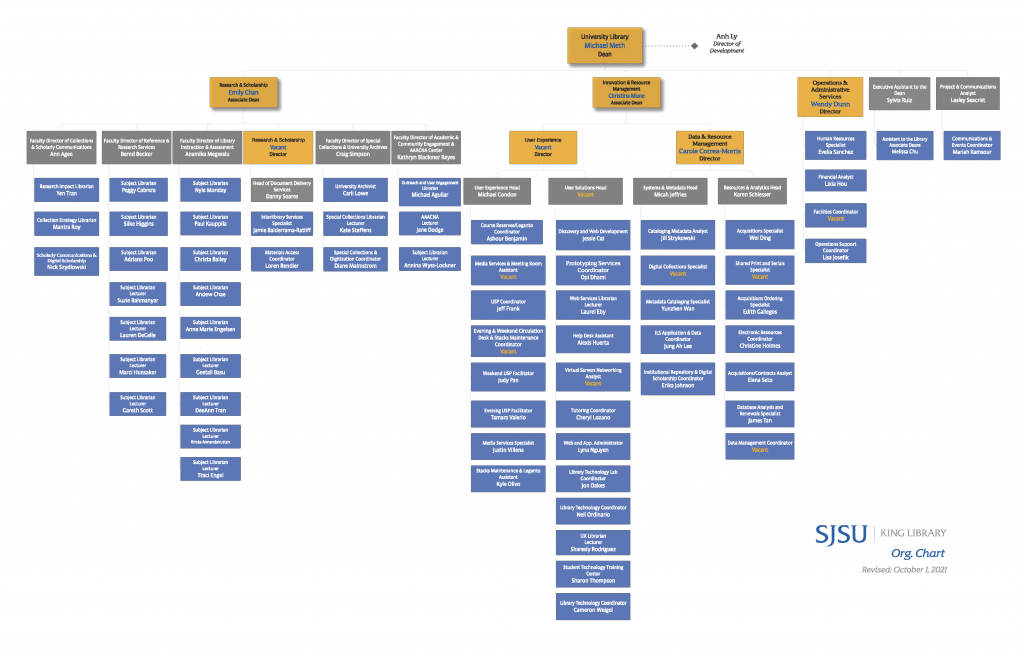
Look at the staff organization chart of the San Jose State Library. It reads as a monolith, a machine. Tight rows of lined soldiers marching one-by-one neatly into obscurity and obsolescence. It is what Brian Matthews in Cultivating Complexity would call the Mechanist Mindset. It is the stifling of creativity for the perceived security of controlled chaos. It may have been a necessity in a time before the internet, but has become even more of an antiquity in a time of a pandemic. Matthews provides some solutions. Three ways to structure amongst the chaos: the Pooled, the Sequential, and the Reciprocal.
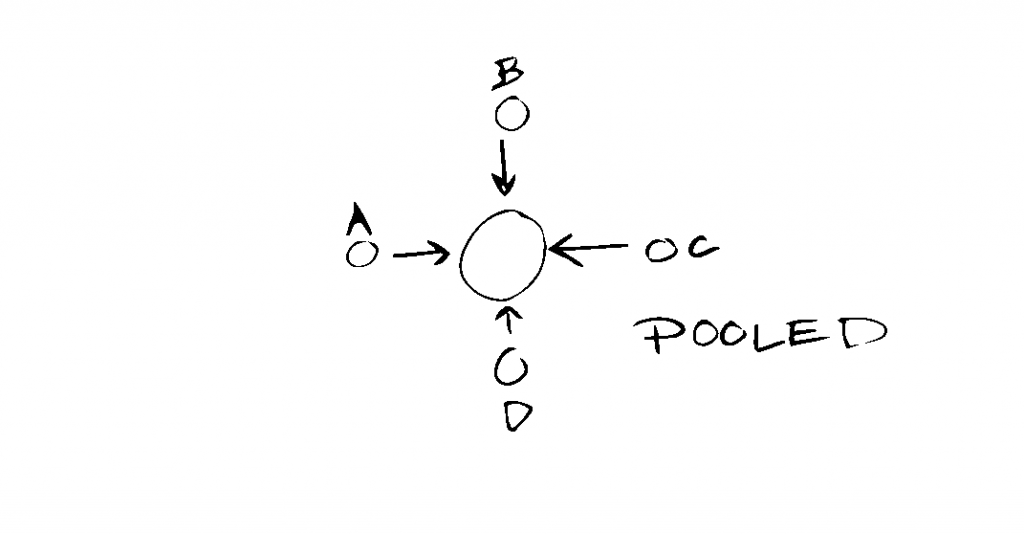

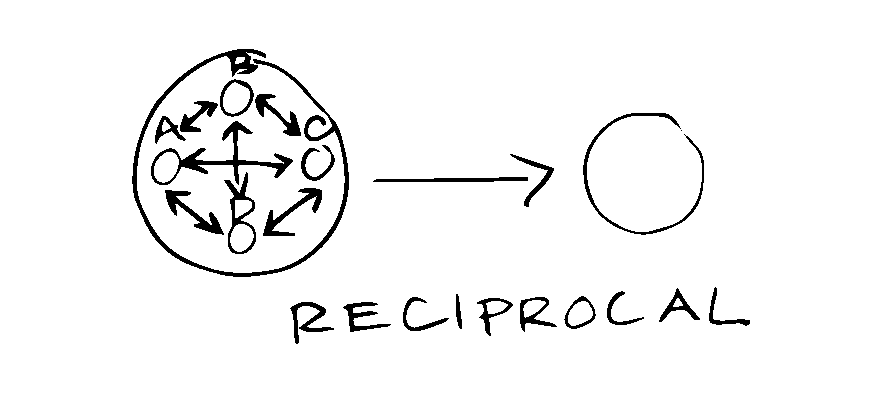
Each one of a particular style, the Pooled being individuals working towards a specific goal, the Sequential vying for step-by-step progress in small increments towards a goal, and the Reciprocal highly interactive and communicative working towards a particular goal. And those are great for individual projects, but how do we get the “Team of Teams”? The highly collaborative, transparent mode of working where everyone is at the table communicating with one another and being able to prioritize needs by seeing the whole landscape.
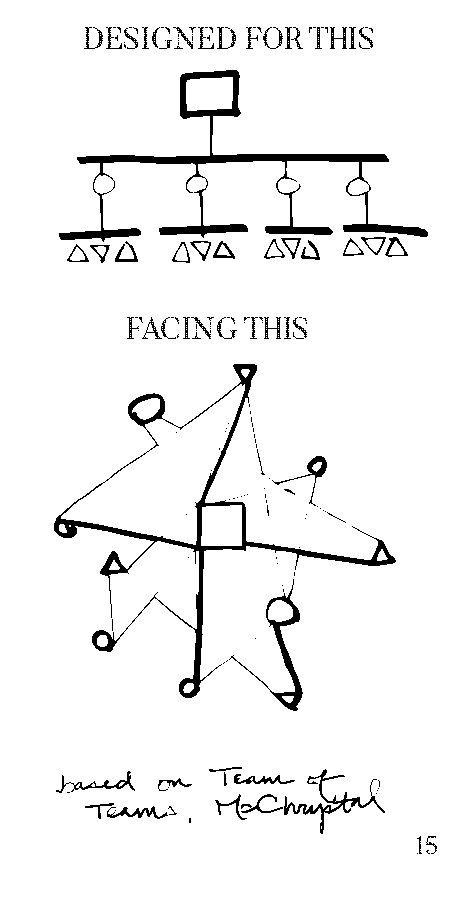
So here it is, The Structural Web. It may not be perfect, but it is a start. A reframing. Instead of top down, we have all across.
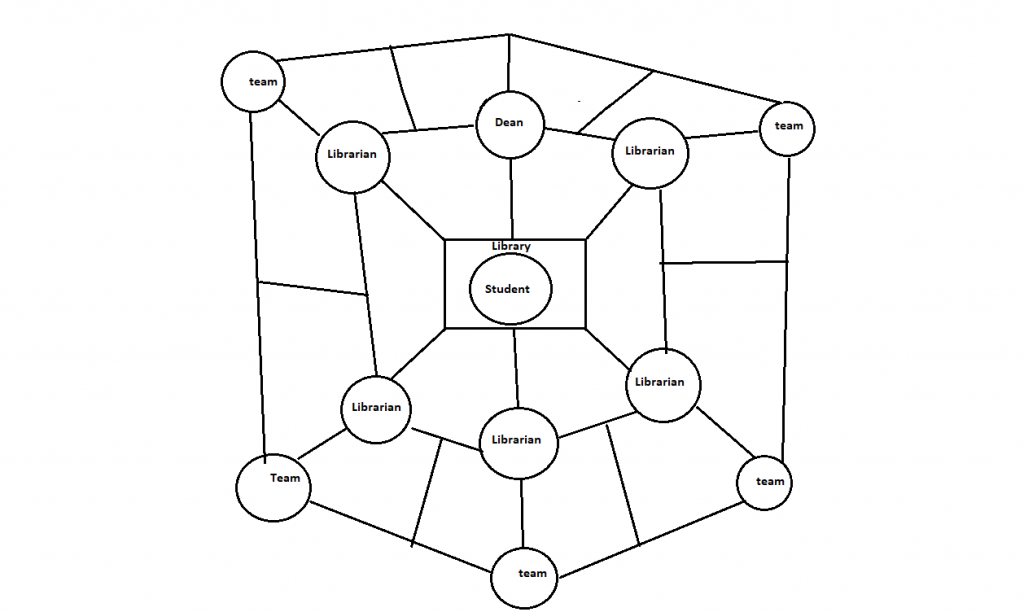
Each string communicating with the next and the next and the next – the vibrational waves spread all across the web. There are no boundaries. Only roles. The non-MECE, that help identify guidance. And while there many goals within this web, there is one identifying factor that everyone works towards: Helping students succeed through the library and beyond.
As Steve Denning says, we are in the time of the Creative Economy. A need for fast-paced movement with a direct eye on the people we are trying to uplift. If we continue to move with the slow, lumbering traditional hierarchy we are in line to become zombies – dead without realizing. This is not to say the org. chart is the end all be all, but it is a place to start. Images play a powerful role to stimulate change. It is a means to show what we value. And I, for one, am tired of having to work in the shadows of the system to get anything done. How about you?
– Cesar
@creyesreads I so enjoyed your narration of this post. I followed along – when you got to the King Library org chart – wowza! You totally illustrated what Weinberger was aiming for. Mathews approach just makes so much sense to me.
@michael I completely agree that Mathews approach makes sense. It too made sense to me so much so I was astonished that it isn’t common practice. It honestly felt a little frustrating to me to see some clear plausible possibilities for change that just are not common knowledge. I am already talking with my librarian friends about, if not at implementing, reading about these practices to give better context to team achievement and restructuring for the better.
@creyesreads I am glad you are talking with colleagues and sharing. Here’s to change!
@creyesreads, I enjoyed listening to your 2nd post! I’m really digging the podcast-style audio recordings you’re making.
Also appreciated your connections to Brian Matthews’ Cultivating Complexity, and this in your concluding paragraph:
“…If we continue to move with the slow, lumbering traditional hierarchy we are in line to become zombies – dead without realizing.” Woo!
Hi @bekah !
Thanks for listening in. I appreciate the comment.
I’ll have to admit, I have been watching All of Us are Dead on Netflix and it definitely felt like a fitting metaphor as I wrote this piece. Definitely check out if you’re into Zombie shows.
Catch you at the next post.
Cheers,
Cesar
@creyesreads I enjoyed your blog!! It is a very nice touch to read your blog post to your audience!! I do agree with you that the organizational chart can be quite stifling. It can appear that the library is more of a corporate structure instead of an organization that exists to serve people. The organizational chart should exist to help work toward a goal. The goal is to serve patrons. A library operates the best when everyone communicates together and does not work in a silo.
Tiffany
@tiffany I am so happy you enjoyed the blog! I hope you continue to listen/read on the next ones.
And yeeees, the regular ol’ organizational chart seems like such a slow rumbling behemoth to me. To get anything done takes months and by that time the frustration is things change. As well, to your point, the org. chart as it stands is so cold. It it red tape as previously mentioned in this post by Weinberer. A series of gates that one has to get to or doesn’t have access to because they are too low on the totem pole. It is frustrating to think that when we are all human looking to help students succeed. Who cares what the persons title is if they have a good idea? isn’t that what matters?
Thanks for the comment!
Cesar